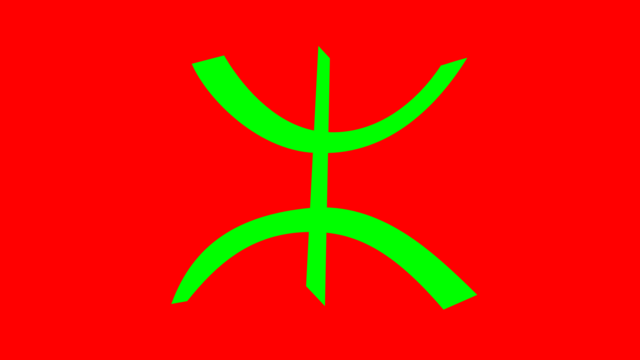Bridging Cultures: A Comprehensive Guide to Moroccan Arabic (Darija) and Amazigh (Berber)

By: Rania Basria/ Arab America Contributing Writer
Morocco is a fascinating nation recognized for its diverse cultural heritage, historical sites, and magnificent scenery. The two principal languages spoken by its inhabitants are Moroccan Arabic (Darija) and Amazigh (Berber), which are essential to comprehending its core. Arab America contributing writer, Rania Basria says, these languages represent Morocco’s rich history, the mix of Arab, Berber, and foreign influences, and the country’s multiculturalism. Learning Darija or Amazigh is a window into the essence of Morocco for tourists and people interested in cultural integration, providing unique insights into its customs, daily life, and social relationships.
Morocco is a multilingual country where language functions as a bridge between its diverse peoples and history. The country’s official languages are Modern Standard Arabic and Amazigh (since 2011, when Amazigh was constitutionally recognized). However, on a day-to-day basis, most Moroccans communicate in Darija, a unique dialect of Arabic, or one of the three primary Amazigh dialects: Tamazight, Tashlhit, and Tarifit. Additionally, French is widely spoken due to Morocco’s colonial history, particularly in education, business, and government sectors.
Understanding the importance of Darija and Amazigh in Morocco is critical to understanding the country’s socioeconomic structure. Darija is the lingua franca in metropolitan areas, with more than 90% of the people utilizing it for daily communication. Amazigh dialects, on the other hand, are predominantly spoken in rural and hilly areas, particularly in the Atlas Mountains and Rif. Together, these languages represent Morocco’s complex combination of Arabic and Berber identities, as well as influences from centuries of commerce, migration, and European colonization.
Darija, often known as Moroccan Arabic, is the dialect spoken by the great majority of Moroccans. While Darija is based on Classical Arabic, it has developed its own grammar, vocabulary, and pronunciation. It includes loanwords from French, Spanish, and Berber, distinguishing it from other Arabic dialects spoken in the Middle East. This can offer difficulties for Arabic speakers from different places, who may struggle to comprehend Darija first.
Learning basic Darija may be quite useful for visitors and expatriates who want to engage with locals. It promotes more natural encounters, such as bartering in souks (markets) and exchanging pleasantries in cafés. Mastering a few important words, such as “salaam alaykum” (peace be upon you) and “bslama” (goodbye), will help you make a favorable impression. Unlike Modern Standard Arabic, which is largely used in official situations, Darija is a language of daily communication.
Because Darija lacks a regular written form, most language learners concentrate on oral abilities. Fortunately, materials for learning Darija are becoming increasingly available. There is an increasing variety of language applications, YouTube channels, and textbooks available to teach conversational Darija, assisting students in grasping vital vocabulary and popular phrases. Some notable resources include Abdellah Chekayri’s “Moroccan Arabic: A Competency-Based Approach” platform and YouTube channels such as Learn Moroccan Arabic with Maha.
While Darija may dominate urban Morocco, Amazigh (also known as Berber) is the core of the country’s indigenous culture. The Amazigh people, who have lived in North Africa for millennia, have rich language traditions that precede Arab presence in the region. Their languages, which belong to the larger Afroasiatic family, are spoken by over 40% of the Moroccan people. Amazigh was designated as an official language in 2011, marking a significant step forward in its preservation and promotion.
Morocco has three primary Amazigh dialects: Tamazight, which is spoken mostly in the Middle Atlas region, Tashlhit in the south and High Atlas, and Tarifit in the Rif Mountains. Each dialect has distinct traits, yet sharing a same cultural and linguistic past. Learning one of these dialects can provide tourists with more access to rural and mountain areas, where Amazigh is frequently the first language spoken.
In recent years, the Tifinagh alphabet, a historic Amazigh script, has been revived and is currently taught in some schools. A few online platforms, textbooks, and community organizations provide Amazigh language education. The Institut Royal de la Culture Amazighe (IRCAM) is a well-known resource that has spearheaded efforts to standardize language education and preservation. There are also applications like “Learn Tifinagh” and online forums where students may practice their abilities with native speakers.
Darija and Amazigh provide unique learning problems, particularly for individuals inexperienced with Arabic or Berber languages. Darija’s absence of a regular written form makes it difficult to obtain structured study resources, and its fast-paced, extensively elided pronunciation frequently perplexes newcomers. Amazigh, while more organized in its written form, has a barrier since it is a less commonly spoken language outside of rural regions, resulting in less resources and chances for practice.
The benefits of learning these languages much exceed the disadvantages. Speaking Darija facilitates communication with the majority of Moroccans, providing a better understanding of daily life, humor, and native way of thinking. Meanwhile, studying Amazigh may open the door to Morocco’s rich traditions and link you with people that have kept their practices for years.
Learning Moroccan Arabic (Darija) or Amazigh (Berber) is more than just a language; it opens the door to knowing Morocco’s heart and soul. Whether you’re visiting bustling cities or serene highlands, learning the fundamentals of these languages may enrich your experience, deepen your connections, and increase your respect for Moroccan culture. With the increasing availability of study tools, now is an excellent moment to begin your language adventure through Morocco’s rich cultural tapestry.
Check out our blog here!








